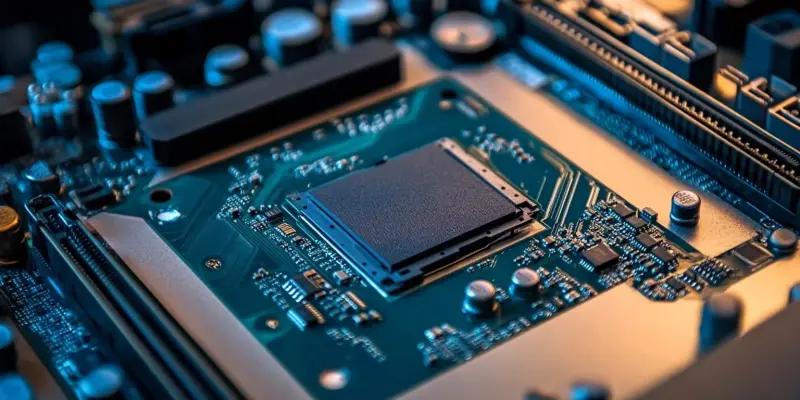In a rapidly evolving tech landscape, a growing faction of the PC market has begun to shift away from the traditional x86 architecture toward Arm-based processors, leading many to wonder if these newcomers can truly challenge the established dominance of x86. The competition has heated up with companies like Qualcomm and Apple leading the charge with their Arm-based solutions, promising superior performance and energy efficiency. Intel, holding onto the conventional x86 architecture, faces mounting pressure to innovate or risk losing market share. To comprehend the intricacies of this transition, it is essential to explore various aspects such as application compatibility, market adoption, and the technological advancements that underpin these changes.
Compatibility Challenges and Market Adoption
Intel’s interim co-CEO Michelle Johnston Holthaus recently highlighted a pressing challenge for Arm-based PCs, noting high return rates for Qualcomm-powered devices due to application compatibility issues. This assertion has sparked a robust debate within the industry, with Qualcomm countering that their return rates are consistent with industry norms. Despite these contentions, Qualcomm remains optimistic about the future, predicting that 30% to 50% of laptops will transition to non-x86 platforms within the next five years. This optimism underscores the company’s confidence in overcoming initial hurdles as more developers optimize their applications for Arm architecture. The overall market share for Arm-based PCs has steadily grown, thanks in large part to Apple’s successful implementation of M-series processors. Apple’s pivot has captured approximately 10% of the market, a significant increase driven by the seamless integration of hardware and software in its devices. However, Qualcomm’s Snapdragon X Elite machines still hold a relatively small fraction at 0.8% of the market share, indicating that while interest is growing, widespread adoption will require more time and refinement.
Intel’s Response and Advances in Processor Technology
Facing the rise of Arm-based processors, Intel is not standing still. The tech giant has been making substantial strides to enhance its performance and power efficiency in an effort to maintain its dominance. Intel’s hybrid architecture, which combines Efficient-cores (E-cores) with Performance-cores (P-cores), exemplifies this innovation. This approach has already demonstrated improved performance and power management in its latest processor series. Additionally, Intel has extended this hybrid architecture to Xeon datacenter CPUs, delivering notable enhancements in performance and energy efficiency for enterprise applications. Collaboration is another crucial aspect of Intel’s strategy. By partnering with Arm to develop low-power System on Chips (SoCs), Intel aims to broaden its portfolio and appeal to the market segment demanding energy-efficient solutions. Moreover, the integration of AI hardware into its processors positions Intel to capitalize on the growing trend of AI-enhanced computing, directly addressing shifting market demands.
AI Integration and Consumer Interest
The market for AI-powered PCs is burgeoning, with AI PCs comprising 20% of all Q3 2024 PC shipments. This marks a substantial 49% increase from the previous quarter, reflecting the rising importance of AI capabilities in modern computing. Interestingly, consumer interest in AI features has remained somewhat limited. Most AI-enabled PCs currently rely on x86 processors from Intel and AMD, offering robust performance and advanced capabilities. On the other hand, Qualcomm’s Snapdragon X Pro and Elite laptops have been noted for their leading battery life and integration with Microsoft’s Copilot AI features. These devices are designed to excel in portable computing scenarios, appealing to a niche market that prioritizes battery endurance and sophisticated AI functionalities. As AI continues to play a more prominent role in computing, both Intel and Qualcomm must navigate evolving consumer preferences and deliver products that meet increasingly diverse needs.
The Future of the PC Market
In a swiftly changing tech landscape, a growing segment of the PC market is moving away from the traditional x86 architecture and gravitating toward Arm-based processors. This shift sparks curiosity about whether these new players can indeed rival the established dominance of x86. Companies like Qualcomm and Apple are at the forefront of this battle, pushing their Arm-based innovations that boast superior performance and enhanced energy efficiency. Meanwhile, Intel, which continues to champion the conventional x86 architecture, faces growing pressure to evolve or risk losing its market share. To fully understand this transition, it’s important to consider factors such as application compatibility, market adoption, and the technological advancements driving these changes. Additionally, exploring the motivations behind companies’ decisions to embrace Arm-based processors offers insights into their strategies for future growth. As these elements continue to develop, the tech industry will witness a compelling competition between the tried-and-true x86 and the emerging Arm-based processors, setting the stage for the future of computing.

